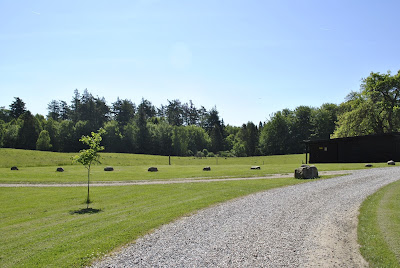Summarize your
experiences of, and write a definition of Danish greenspace.
After three weeks of class, and many fieldtrips to different
types of greenspaces in Denmark, you might assume it would be easy to put one
simple definition on the phrase “Danish Greenspace,” however; the phrase cannot
be described by one simple sentence or one definition. Before defining Danish
greenspace, I feel it is important to define what the term ‘greenspace’ means.
A greenspace is any area of land set aside for the building of a park or other
section of land that can be used for the enjoyment by people. While this
definition is true, the phrase, “Danish Greenspace” means much more than that
and it adds an element of culture to the word.
The Danish culture is very much influenced by greenspace and
the greenspaces are influence by the Danes themselves. Danish Greenspace, in a
physical sense, is a park or other area in which Danes can go to a number of
various activities; it incorporates history, education and self-expression into
the everyday life of the Danes. Because the Danish identity can be contributed
largely to an eco-friendly attitude and an overall “green” lifestyle, the use
of greenspaces is a big part of their lives. Danish Greenspace, in a
non-physical sense, is a feeling or a bond that holds the Danes so close to one
another and nature and it is important to the Danes in number of ways. The
entire Danish identity is influenced very greatly by Danish Greenspace, which
shows just how important greenspaces are, especially in Denmark.
In the past three weeks, I’ve come to learn a lot about
Danish Greenspace, culture and identity. My experiences in this class have also
shown me a lot about myself that I hadn’t previously known. From a class
standpoint, I learned a lot about the history of Denmark, the Danes, and the
parks including many dates, and other historical facts. While I did enjoy
learning about Denmark’s past, I took an even greater lesson from the class. I
learned about Danish culture and how the Danes live each day. The history and
facts played a role in learning this but more important than the facts was the
field experience. It isn’t possible, or it’s at least extremely different to
learn and understand Danish culture by sitting in a classroom. The trips back
in time at Lejre or Gilleleje and the trips to quiet peacefulness at De Runde
Haver and Store Hareskov and Bådfart and even the modern park trips to
Superkilen and Mimersparken all contributed to gaining insight on Danish
culture and how their society works.
This class offered me far more than I ever though it would.
I assumed I would learn about the history of Danish parks and how they are used
but I never imagined I would be able to see, hear, feel and experience Danish
culture in just the few short weeks I was in Denmark. I am grateful for this
class and all of the experiences I was able to gain through it.


















